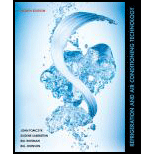
Concept explainers
Define a residential energy audit.
A residential energy audit.
Answer to Problem 1RQ
The residential energy audit is the step which is taken to conserve the energy as well as to save the homeowner's money without affecting comfort and safety.
Explanation of Solution
A residential energy audit is related to the steps taken to conserve the energy without affecting the comfort and safety of homeowner. Energy audits are important for everyone. This can help the homeowner to cut some expenses on electricity as well as can save up to 15% of money.
The residential energy unit is also important from the government point of view. It can provide the data which shows the dependency of a resident's electricity produced on foreign oils.
Energy audits give detail about the heating load and cooling load of a resident. In the United States, it is important to have these details as most of the energy is consumed by these applications.
Conclusion:
Thus, the residential energy audit is the steps which are taken to conserve the energy as well as save homeowners money without affecting comfort and safety.
Want to see more full solutions like this?
Chapter 39 Solutions
Refrigeration and Air Conditioning Technology (MindTap Course List)
- Correct answer is written below. Detailed and complete solution only with fbd. I will upvote, thank you.arrow_forwardCorrect answer is written below. Detailed and complete solution only. I will upvote, thank you.arrow_forwardCorrect answer is written below. Detailed and complete solution with fbd only. I will upvote, thank you.arrow_forward
- Correct answer is written below. Detailed and complete solution only. I will upvote, thank you.arrow_forwardCorrect answer is written below. Detailed and complete solution with fbd only. I will upvote, thank you.arrow_forwardCorrect answer is written below. Detailed and complete solution only. I will upvote, thank you.arrow_forward
- Correct answer is written below. Detailed and complete solution only. I will upvote, thank you.arrow_forwardCorrect answer is written below. Detailed and complete solution only. I will upvote, thank you.arrow_forwardCorrect answer is written below. Detailed and complete solution with fbd only. I will upvote, thank you. Prefferably handwritten solution pleasearrow_forward
- Correct answer is written below. Detailed and complete solution with fbd only. I will upvote, thank you. Prefferably handwritten solution pleasearrow_forwardCorrect answer is written below. Detailed and complete solution only. I will upvote, thank you.arrow_forwardCorrect answer is written below. Detailed and complete solution with fbd only. I will upvote, thank you. Prefferably handwritten solution pleasearrow_forward
 Refrigeration and Air Conditioning Technology (Mi...Mechanical EngineeringISBN:9781305578296Author:John Tomczyk, Eugene Silberstein, Bill Whitman, Bill JohnsonPublisher:Cengage Learning
Refrigeration and Air Conditioning Technology (Mi...Mechanical EngineeringISBN:9781305578296Author:John Tomczyk, Eugene Silberstein, Bill Whitman, Bill JohnsonPublisher:Cengage Learning Precision Machining Technology (MindTap Course Li...Mechanical EngineeringISBN:9781285444543Author:Peter J. Hoffman, Eric S. Hopewell, Brian JanesPublisher:Cengage Learning
Precision Machining Technology (MindTap Course Li...Mechanical EngineeringISBN:9781285444543Author:Peter J. Hoffman, Eric S. Hopewell, Brian JanesPublisher:Cengage Learning

